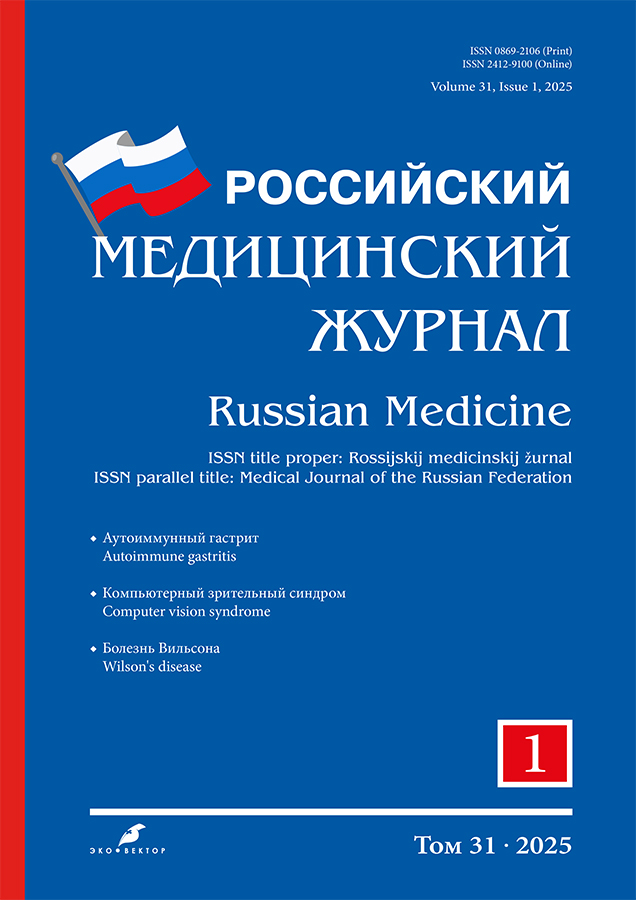Obstructive sleep apnea in patients with bradyarrhythmias
- Authors: Yunyaeva M.V.1, Bulavina I.A.1, Baymukanov A.M.1, Weissman Y.D.1, Evmenenko A.A.1, Ilyich I.L.1, Termosesov S.A.1
-
Affiliations:
- Buyanov City Clinical Hospital
- Issue: Vol 31, No 1 (2025)
- Pages: 76-84
- Section: Case reports
- Submitted: 02.12.2024
- Accepted: 25.12.2024
- Published: 17.02.2025
- URL: https://medjrf.com/0869-2106/article/view/642456
- DOI: https://doi.org/10.17816/medjrf642456
- ID: 642456
Cite item
Abstract
BACKGROUND: Obstructive sleep apnea (OSA) is associated with various cardiovascular diseases, including arterial hypertension, chronic heart failure, and cardiac rhythm and conduction disorders. In some patients, preexisting bradycardia may not be directly related to OSA. Therefore, it is advisable to rule out OSA in patients referred for pacemaker implantation.
CLINICAL CASES DESCRIPTION: OSA is a common condition frequently associated with bradyarrhythmias. In some cases, treatment for such patients involves the implantation of a permanent endocardial pacemaker. Undiagnosed OSA may lead to an increased number of unnecessary pacemaker implantations, emphasizing the importance of timely diagnosis and treatment of this condition. This article presents clinical observations of seven patients with nocturnal bradyarrhythmias, which resolved following continuous positive airway pressure (CPAP) therapy.
The use of CPAP therapy contributed to the improvement of cardiovascular parameters, including the reduction in the number and duration of heart rhythm pauses. Clinically significant bradyarrhythmias were resolved in patients, allowing them to avoid surgical intervention. In the described cases, patients demonstrated a high apnea–hypopnea index (35.0–79.5 episodes per hour), a significant decrease in blood oxygen saturation (minimum up to 50%), and significant heart rhythm disturbances during the night. The initiation of CPAP therapy led to a reduction in the apnea–hypopnea index (1.9–23.1 episodes per hour), normalization of minimum oxygen saturation (80–93%), and the elimination of prolonged rhythm pauses.
CONCLUSION: The findings highlight the necessity of mandatory screening for OSA in patients with nocturnal bradyarrhythmias before planning pacemaker implantation. CPAP therapy effectively eliminates rhythm disturbances associated with sleep apnea and prevents unnecessary surgical procedures. This confirms the importance of a comprehensive approach to the diagnosis and treatment of this category of patients and the need for further large-scale studies to optimize their management tactics.
Full Text
About the authors
Maria V. Yunyaeva
Buyanov City Clinical Hospital
Author for correspondence.
Email: z.maria88@mail.ru
ORCID iD: 0009-0003-3726-734X
Russian Federation, Moscow
Irina A. Bulavina
Buyanov City Clinical Hospital
Email: doctoroirb@yandex.ru
ORCID iD: 0000-0002-6267-3724
SPIN-code: 1275-2773
Russian Federation, Moscow
Azamat M. Baymukanov
Buyanov City Clinical Hospital
Email: baymukanov@gmail.com
ORCID iD: 0000-0003-0438-8981
SPIN-code: 3039-3880
MD, Cand. Sci. (Medicine)
Russian Federation, MoscowYulia D. Weissman
Buyanov City Clinical Hospital
Email: judy50@mail.ru
ORCID iD: 0000-0002-5994-4984
SPIN-code: 5883-4809
Russian Federation, Moscow
Artyom A. Evmenenko
Buyanov City Clinical Hospital
Email: rymata1982@mail.ru
ORCID iD: 0009-0000-8682-0680
Russian Federation, Moscow
Ilya L. Ilyich
Buyanov City Clinical Hospital
Email: iilyich@mail.ru
ORCID iD: 0000-0003-4169-1066
Russian Federation, Moscow
Sergey A. Termosesov
Buyanov City Clinical Hospital
Email: stermosesov@list.ru
ORCID iD: 0000-0003-2466-7865
SPIN-code: 5785-5776
Russian Federation, Moscow
References
- Akashiba T, Inoue Y, Uchimura N, et al. Sleep Apnea Syndrome (SAS) Clinical practice guidelines 2020. Sleep Biol Rhythms. 2022;20(1):5–37. doi: 10.1007/s41105-021-00353-6
- Marti Almor J, Felez Flor M, Balcells E, et al. Prevalence of obstructive sleep apnea syndrome in patients with sick sinus syndrome. Rev Esp Cardiol (Engl Ed). 2006;59:28–32. doi: 10.1016/S1885-5857(06)60045-5
- Garrigue S, Pépin JL, Defaye P, et al. High prevalence of sleep apnea syndrome in patients with long-term pacing: the European Multicenter Polysomnographic Study. Circulation. 2007;115(13):1703–1709. doi: 10.1161/CIRCULATIONAHA.106.659706
- Benjafield AV, Ayas NT, Eastwood PR, et al. Estimation of the global prevalence and burden of obstructive sleep apnoea: a literature-based analysis. Lancet Respir Med. 2019;7(8):687–698. doi: 10.1016/S2213-2600(19)30198-5 EDN: XIPLYW
- Glikson M, Nielsen JC, Kronborg MB, et al. 2021 ESC Guidelines on cardiac pacing and cardiac resynchronization therapy. Eur Heart J. 2021;42:3427–3520. doi: 10.1093/eurheartj/ehab364 EDN: DJULHV
- Kusumoto FM, Schoenfeld MH, Barrett C, et al. 2018 ACC/AHA/HRS Guideline on the evaluation and management of patients with bradycardia and cardiac conduction delay: a report of the American College of Cardiology/American Heart Association Task Force on Clinical Practice Guidelines and the Heart Rhythm Society. Circulation. 2019;140(8):e382–e482. doi: 10.1161/CIR.0000000000000628
- Revishvili ASh, Artyukhina EA, Glezer MG, et al. 2020 clinical practice guidelines for bradyarrhythmias and conduction disorders. Russ J Cardiol. 2021;26(4):4448. doi: 10.15829/1560-4071-2021-4448 EDN: OQTHDM
- Simantirakis EN, Schiza SI, Marketou ME, et al. Severe bradyarrhythmias in patients with sleep apnoea: the effect of continuous positive airway pressure treatment: a long-term evaluation using an insertable loop recorder. Eur Heart J. 2004;25(12):1070–1076. doi: 10.1016/j.ehj.2004.04.017 EDN: INPXOL
- Filchenko I, Bochkarev M, Kandinsky A, et al. Continuous positive airway pressure therapy restores bradyarrhythmia with 10-second asystole in hypertensive obese patient with obstructive sleep apnea. HeartRhythm Case Rep. 2020;6(6):300–303. doi: 10.1016/j.hrcr.2020.02.005 EDN: DAXFBZ
- Shchekotov VV, Jankina TI, Luchnikova EA. Risk reduction of cardiovascular risk in a patient with both heart rhythm and conduction disorders and obstructive sleep apnea-hypopnea syndrome by CPAP therapy. Arter Hypertens. 2012;18(3):250–253. doi: 10.18705/1607-419X-2012-18-3-250-253 EDN: PCXZTF
- Płatek AE, Karpiński G, Szymański FM. Can continuous positive airway pressure therapy have antiarrhythmic properties? Kardiol Pol. 2015;73(8):671. doi: 10.5603/KP.2015.0155
- Belenkov YN, Palman AD. Obstructive sleep apnea syndrome and cardiac arrhythmias. Effective Pharmacotherapy. 2015;53:56–63. EDN: VWHTEV
- Yu J, Zhou Z, McEvoy RD, et al. Association of positive airway pressure with cardiovascular events and death in adults with sleep apnea: a systematic review and meta-analysis. JAMA. 2017;318(2):156–166. doi: 10.1001/jama.2017.7967 EDN: ZVZPJL
- Xie C, Zhu R, Tian Y, et al. Association of obstructive sleep apnoea with the risk of vascular outcomes and all-cause mortality: a meta-analysis. BMJ Open. 2017;7(12):e013983. doi: 10.1136/bmjopen-2016-013983
- Zorina AV, Kulagina AM, Kazarina AV, et al. Obstructive sleep apnea in patients with atrial fibrillation. Neurol J. 2017;22(4):177–181. doi: 10.18821/1560-9545-2017-22-4-177-181 EDN: ZGIWZN
- Bairambekov ESh, Pevzner AV, Litvin AY, et al. Atrial fibrillation and prolonged nocturnal cardiac arrests in a patient with obstructive sleep apnea syndrome. Ter Arkh. 2016;88(9):84–89. doi: 10.17116/terarkh201688984-89 EDN: WTDAMN
- Saito K, Okada Y, Torimoto K, et al. Blood glucose dynamics during sleep in patients with obstructive sleep apnea and normal glucose tolerance: effects of CPAP therapy. Sleep Breath. 2022;26(2):771–781. doi: 10.1007/s11325-021-02442-9 EDN: ATDFYQ
Supplementary files











